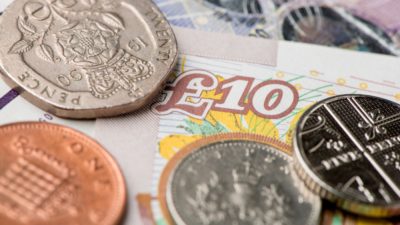 British American Tobacco (LSE: BATS) shareholders have seen the value of their shares rise by 95% over the last five years, during which they’ve received 617.5p in dividends.
British American Tobacco (LSE: BATS) shareholders have seen the value of their shares rise by 95% over the last five years, during which they’ve received 617.5p in dividends.
Today, BAT’s shares trade close to all-time highs, on a forecast P/E of 16.5, and with a prospective yield of 4.1%. Are they still a buy, or is the tobacco giant’s long run of growth likely to slow?
I’ve taken a closer look at BAT’s performance and valuation to find out more.
Valuation
Let’s start with the basics: how is BAT valued against past performance and future expectations?
| BAT valuation | Current value |
| P/E using 5-year average earnings per share | 18.8 |
| 2-year average forecast P/E | 15.9 |
Source: Company reports, consensus forecasts
The first thing to note is that investors are expecting BAT to continue to deliver above-average earnings per share growth over the next two years, as the firm’s forecast P/E of 15.9 is significantly higher than the current FTSE 100 average P/E of 13.9.
Looking back, BAT’s earnings per share have risen steadily over the last five years, meaning that BAT shares now look expensive when compared to historical earnings.
Overall, BAT’s valuation looks demanding, but not unreasonable.
What about the fundamentals?
Share price outperformance is usually driven by above-average sales and profit growth, as has happened at BAT:
| 5-year compound average growth rate | British American Tobacco |
| Sales (excluding duty/taxes) | 1.4% |
| Pre-tax profit | 7.4% |
| Adjusted earnings per share | 7.4% |
| Dividend | 7.4% |
Source: Company reports
This table highlights the attractions of BAT for investors: strong profit growth has translated directly into dividend growth, thanks to the firm’s strong cash generation.
Sales growth has actually been quite ordinary, rising by an average of just 1.4% per year over the last five years, once duty and taxes are subtracted. These numbers show how BAT’s focus on scale, efficiency and strong brands has helped the firm deliver profit growth in a declining market.
Can BAT maintain growth?
BAT’s half-year results suggest it can maintain this rate of growth, as adjusted earnings per share were up by 8% on a constant currency basis.
However, virtually all of BAT’s sales are outside the UK, and the strong pound means that reported earnings fell by 7% compared to the same period last year.
In my view, BAT shares remain a hold at the moment. The company’s planned $4.7bn investment in Reynolds American means that the long-running share buyback programme is to be suspended.
I suspect that this, combined with currency effects, and weaker reported earnings, may lead to some erosion of BAT’s share price over the next six months — so I wouldn’t buy any more at today’s price.






